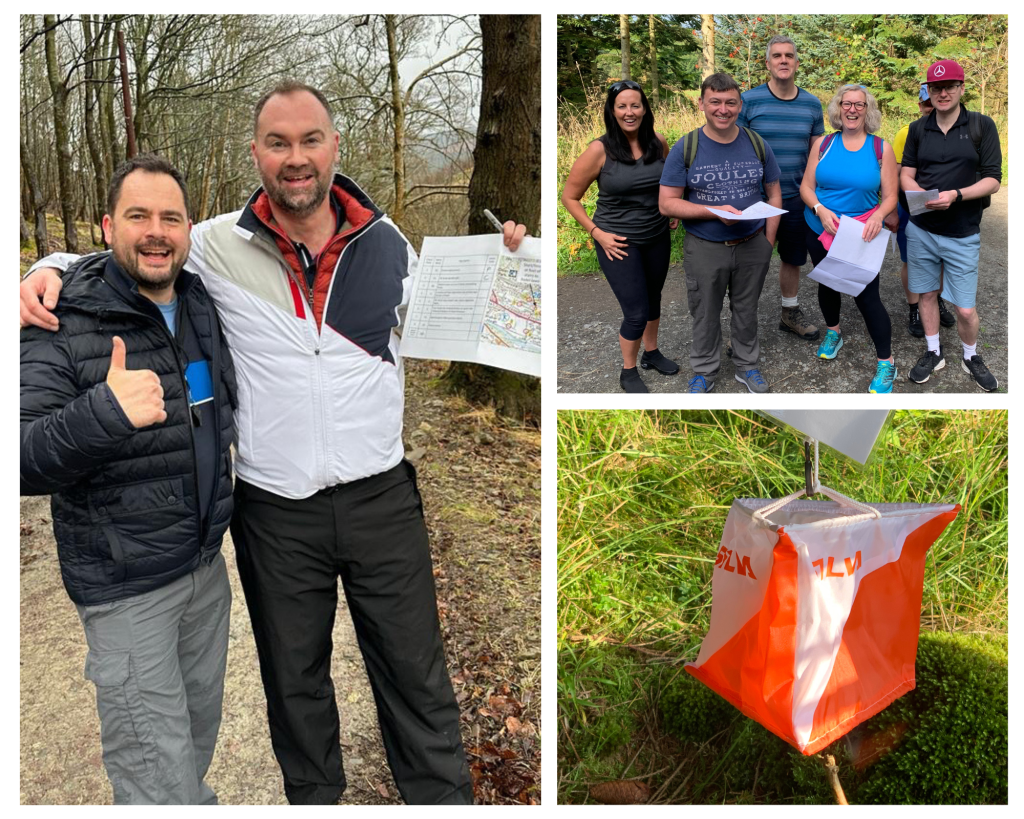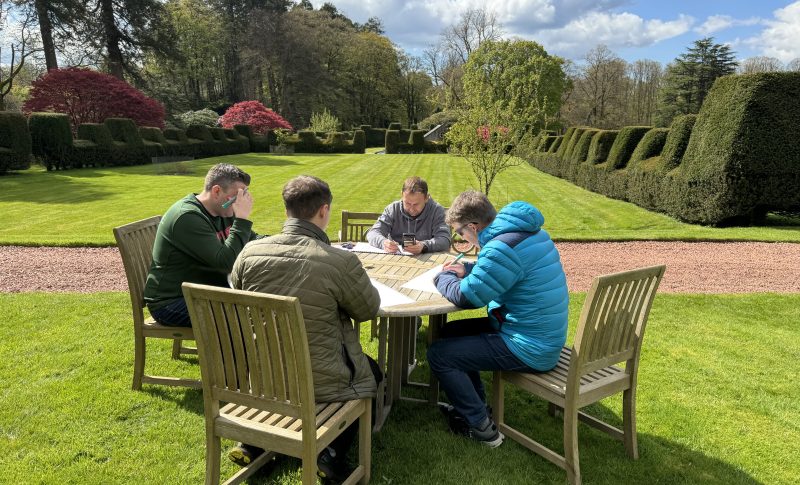Score orienteering – Why?
What?
Score orienteering, in the form that we use it, is an outdoor exercise in working together as a team to develop and execute a strategy.
We use small areas with good paths. No compasses or advanced navigation skills are required.
Teams earn points by navigating to check points on a course marked out on a map and/or satellite photograph. Each check point has a different value reflecting its distance from the start/finish and how easy or difficult it is to find. They have unique letters which are recorded onto a team card. Teams can split into sub-teams of 2 people minimum (one aspect of a wider Risk Management Plan) to cover as much of the course as possible.
Here is the rub.
Teams are given a fixed time to achieve as much as possible after which penalty points escalate rapidly.
The test therefore is really about developing a strategy and executing a plan to maximise return on the skills of the team and a fixed investment of time!
Want to know more about how we can support you and your team? Call/message 07776 153428 or email dave@freshairleadership.com
Why?
We use score orienteering in our leadership team programmes for a number of reasons:
- It is fun!
- It is a great way of switching up the energy during the day.
- The learning insights that emerge are strongly anchored to what is always a highly memorable experience.
- It engages everyone, whether fleet of foot or less so (as there are check points near and far), with a premium placed on the thinking and strategising that happens (or doesn’t!).
With good facilitation, it provides a memorable way into discussing team function. This, and other experiential activities we employ, are not vehicles for judging anyone’s performance. They are simply ways into carefully facilitated discussions.
- Psychological safety. Did team members feel included, safe to learn, safe to contribute, safe to challenge?
- How collaborative was the strategising, decision-making, and planning experience? How did people feel about what they experienced of their colleagues?
- What did colleagues notice about their team roles preferences (after Belbin). Who were the strategists, planners, resource managers etc? Did anyone feel left out?
- How well did participants appreciate the difference between the plan (the map) and reality (the ground). How might this apply back in the business?
- How were choices and trade-offs made in seeking an optimum route in an environment that presented opportunity and risk?
- How were team members employed on this task? How were skills and experience canvassed and used to best effect?
Where?
Here is an example of a control sheet we give to teams (showing map and satellite photo variants). In this case the area is around the House for an Art Lover in Bellahouston Park, Glasgow.
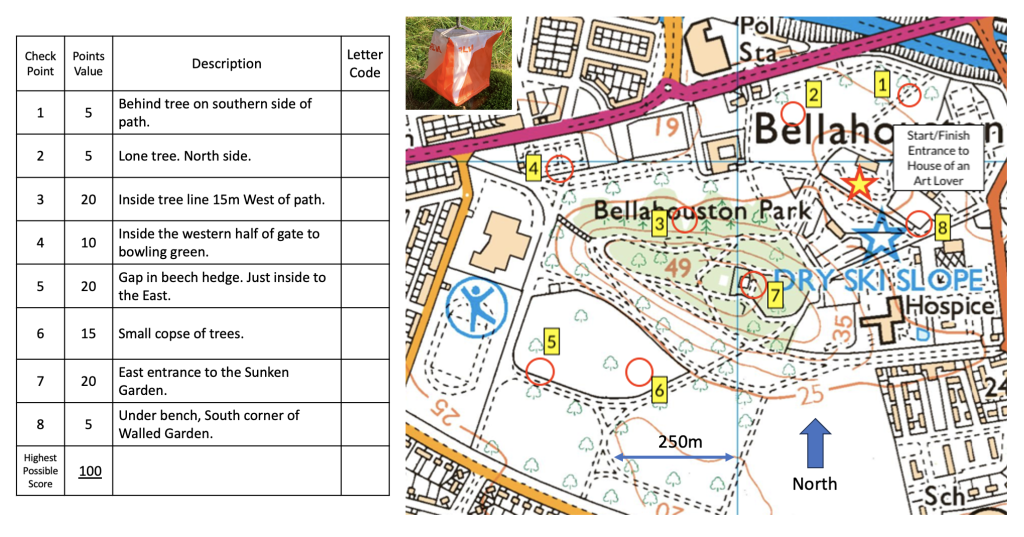
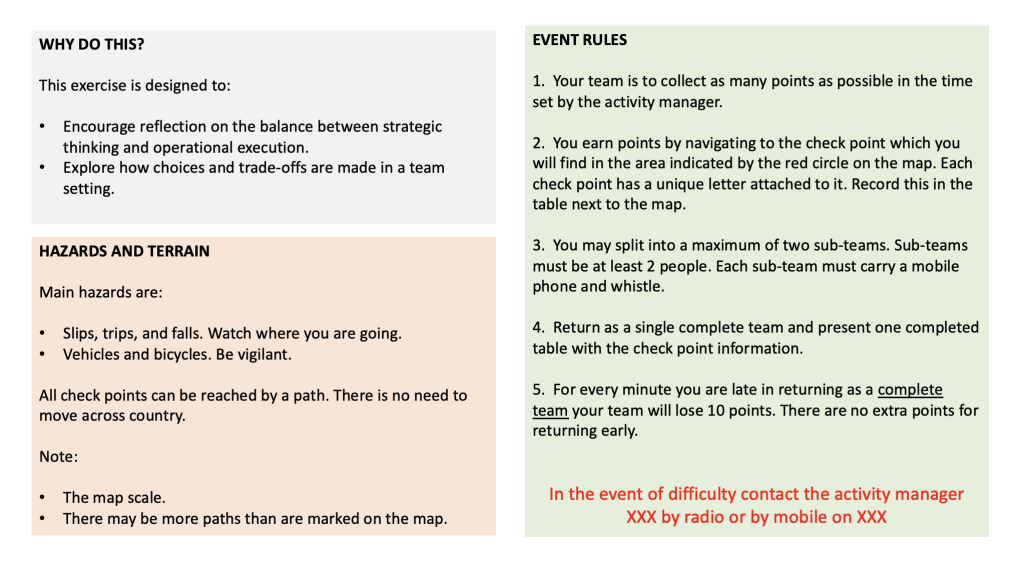
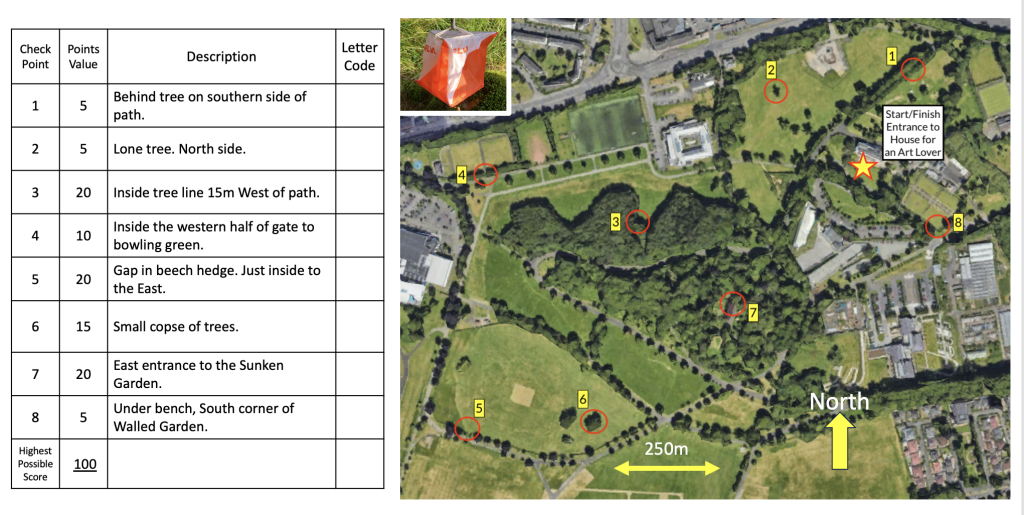
How?
On a safety note, events such as these need a thorough risk assessment and risk management plan. When we organise these, we use staff who are experienced and qualified outdoor leaders (through Mountain Training UK) and first aiders, and a risk management process which has been externally audited.
Can we help you?
Our core business is helping business leaders develop highly effective teams. This post about score orienteering is just one example of our experiential approach.
Want to know more about how we can support you and your team? Call/message 07776 153428 or email dave@freshairleadership.com
